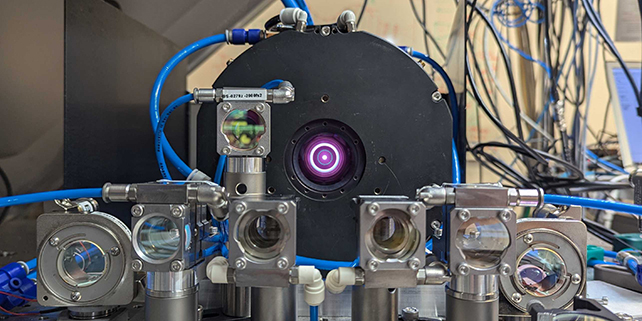Place your adverts here on InfoDig @ low rates; banner ads, sponsored links and guest articles etc. Contact us
Any advance in laser tech has huge potential across a whole range of fields – from space comms to fusion power – and we just got a big one: ultra-short laser pulses of up to 100 megawatts, the most powerful of their type ever produced from a human-made system.
These pulses last less than a picosecond (a millionth of a millionth of a second), and the 100 megawatt maximum would be enough to briefly power 100,000 vacuum cleaners, from a single pulse. Even the average power output, 550 watts, is more than 50 percent higher than anything previously seen in experiments.
The new technology could find all kinds of uses in high-precision measurements, monitoring, and the machining of other materials, according to the team behind the research, from ETH Zurich in Switzerland.
 The laser setup. (Moritz Seidel/ETH Zürich)
The laser setup. (Moritz Seidel/ETH Zürich)"This record is the result of a long and exciting journey with lots of interesting laser physics," says physicist Ursula Keller, from ETH Zurich.
We're dealing with what are known as short pulsed disk lasers here, based around super-thin disks that hold a crystal containing ytterbium atoms. This disk creates a laser beam when those atoms are excited.
There are two innovations at work here: first, a special arrangement of mirrors to form an improved 'replicating cavity', which is able to bounce around and amplify the laser light to greater levels without losing instability.
Second, there's the semiconductor mirror used in the laser – called a Semiconductor Saturable Absorber Mirror or SESAM. It helps shape the laser light into short, intense pulses. This was upgraded by the team in a number of ways, including the addition of a thin sapphire window.
This kind of laser light amplification has previously involved more energy and bigger instruments, often outside the laser itself. The technology used here, in contrast, is more compact and efficient.
"Pulses with powers comparable to the ones we have now achieved could, up to now, only be achieved by sending weaker laser pulses through several separate amplifiers outside the laser," says physicist Moritz Seidel, from ETH Zurich.
The researchers responsible for the record-breaking laser have plenty of ideas about how it could be used. One potential application is in the frequency combs used in ultra-precise clocks, which could mean more accuracy in measuring time and natural phenomena.
These types of lasers can also be used in testing materials without cutting into them: looking for defects in objects, for example, or scanning the human body. This setting of new records is just the start for the improved laser technology.
And it's another great example of the detailed and dedicated work scientists do in the lab, to develop lasers that go above and beyond what we've seen before, and using them to examine the Universe around us.
"When it finally worked and we watched how the laser created pulses – that was really cool," says Seidel.
The research has been published in Optica.















 English (US) ·
English (US) ·